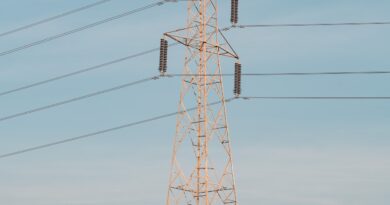Beyond the Surface: Revealing the Hidden Dangers in Gurgaon’s Electrical Safety Audits
Introduction
Electrical safety audits play a crucial role in ensuring the safety and well-being of individuals and properties in Gurgaon. These audits are designed to identify potential hazards, assess compliance with safety standards, and provide recommendations for improving electrical systems. However, beneath the surface, there are hidden dangers that can compromise the effectiveness of these audits. This article explores the hidden dangers in Gurgaon’s electrical safety audits, shedding light on the risks involved and the measures that need to be taken to address them.
Understanding Electrical Safety Audits
An electrical safety audit is a comprehensive assessment of an electrical system to identify potential hazards, evaluate the adherence to safety regulations, and recommend corrective actions. It involves a thorough examination of electrical installations, equipment, and practices to ensure they meet the required standards. The audit process typically includes visual inspections, testing, and documentation review.
Importance of Electrical Safety Audits
Electrical safety audits are crucial for several reasons. Firstly, they help prevent electrical accidents, such as electrocution, fires, and property damage. Secondly, they ensure compliance with legal and regulatory requirements, minimizing the risk of penalties and legal liabilities. Additionally, these audits promote the efficient use of energy and contribute to sustainability efforts by identifying areas where energy consumption can be reduced.
Common Electrical Hazards
Before delving into the hidden dangers of electrical safety audits, it’s essential to understand the common electrical hazards that these audits aim to mitigate. Some of the most prevalent hazards include:
1. Faulty Wiring
Faulty wiring poses a significant risk as it can lead to electrical shocks, short circuits, and fires. Aging infrastructure, improper installation, and inadequate maintenance are common causes of faulty wiring.
2. Overloaded Circuits
Overloaded circuits occur when too many electrical devices are connected to a single circuit, surpassing its capacity. This can result in overheating, tripped circuit breakers, and even electrical fires.
3. Inadequate Grounding
Proper grounding is essential to protect individuals and equipment from electrical faults. Inadequate grounding can lead to electric shocks, equipment damage, and malfunctions.
4. Outdated Electrical Panels
Outdated electrical panels may lack the necessary safety features, making them prone to electrical failures and increased risks of electrical accidents.
The Role of Electrical Safety Audits in Gurgaon
In Gurgaon, electrical safety audits serve as a crucial mechanism to ensure the safety and compliance of electrical systems. These audits are performed by qualified professionals who assess the electrical infrastructure of residential, commercial, and industrial buildings. The audits aim to identify potential hazards, assess the condition of electrical equipment, and recommend corrective measures to mitigate risks.
Limitations and Challenges
Despite their importance, electrical safety audits in Gurgaon face limitations and challenges. These include:
- Lack of Expertise: Some auditors may lack the necessary expertise and experience to identify hidden dangers accurately.
- Non-compliance with Standards: In certain cases, audited facilities may not meet the required safety standards, indicating a gap in compliance.
- Insufficient Documentation: Inadequate documentation practices can hinder the effectiveness of audits and lead to incomplete assessments.
- Negligence in Risk Assessment: Failing to conduct comprehensive risk assessments can result in overlooked hazards and increased safety risks.
Hidden Dangers in Gurgaon’s Electrical Safety Audits
While electrical safety audits are intended to enhance safety, several hidden dangers can compromise their effectiveness. These dangers include:
1. Lack of Expertise
Some auditors in Gurgaon may lack the necessary expertise to identify potential risks accurately. Insufficient training and experience can result in overlooked hazards and inadequate recommendations for corrective actions.
2. Non-compliance with Standards
In certain cases, audited facilities may not comply with the required safety standards. This non-compliance can occur due to outdated electrical systems, improper maintenance, or a lack of awareness regarding regulatory changes.
3. Insufficient Documentation
Proper documentation is essential for effective audits. However, inadequate documentation practices, such as incomplete records and missing maintenance logs, can hinder auditors’ ability to assess electrical systems comprehensively.
4. Negligence in Risk Assessment
Thorough risk assessment is a critical component of electrical safety audits. Negligence in this process can lead to the oversight of potential hazards, thereby compromising the safety of individuals and properties.
The Impact on Safety and Sustainability
The hidden dangers in Gurgaon’s electrical safety audits have a significant impact on safety and sustainability. When potential risks are not identified and addressed appropriately, it increases the likelihood of electrical accidents, property damage, and injuries. Moreover, the lack of compliance with safety standards hinders sustainability efforts, as energy efficiency measures may not be effectively implemented.
Addressing the Hidden Dangers
To overcome the hidden dangers in Gurgaon’s electrical safety audits, the following measures should be implemented:
1. Enhancing Training and Expertise
Providing comprehensive training programs for auditors and ensuring they possess the necessary expertise to identify hidden dangers accurately is crucial. Continuous professional development and knowledge-sharing initiatives can contribute to improving the quality of audits.
2. Strict Adherence to Standards and Regulations
Auditors and audited facilities must strictly adhere to safety standards and regulations. Regular updates on regulatory changes and rigorous compliance monitoring can help ensure that electrical systems meet the required safety criteria.




